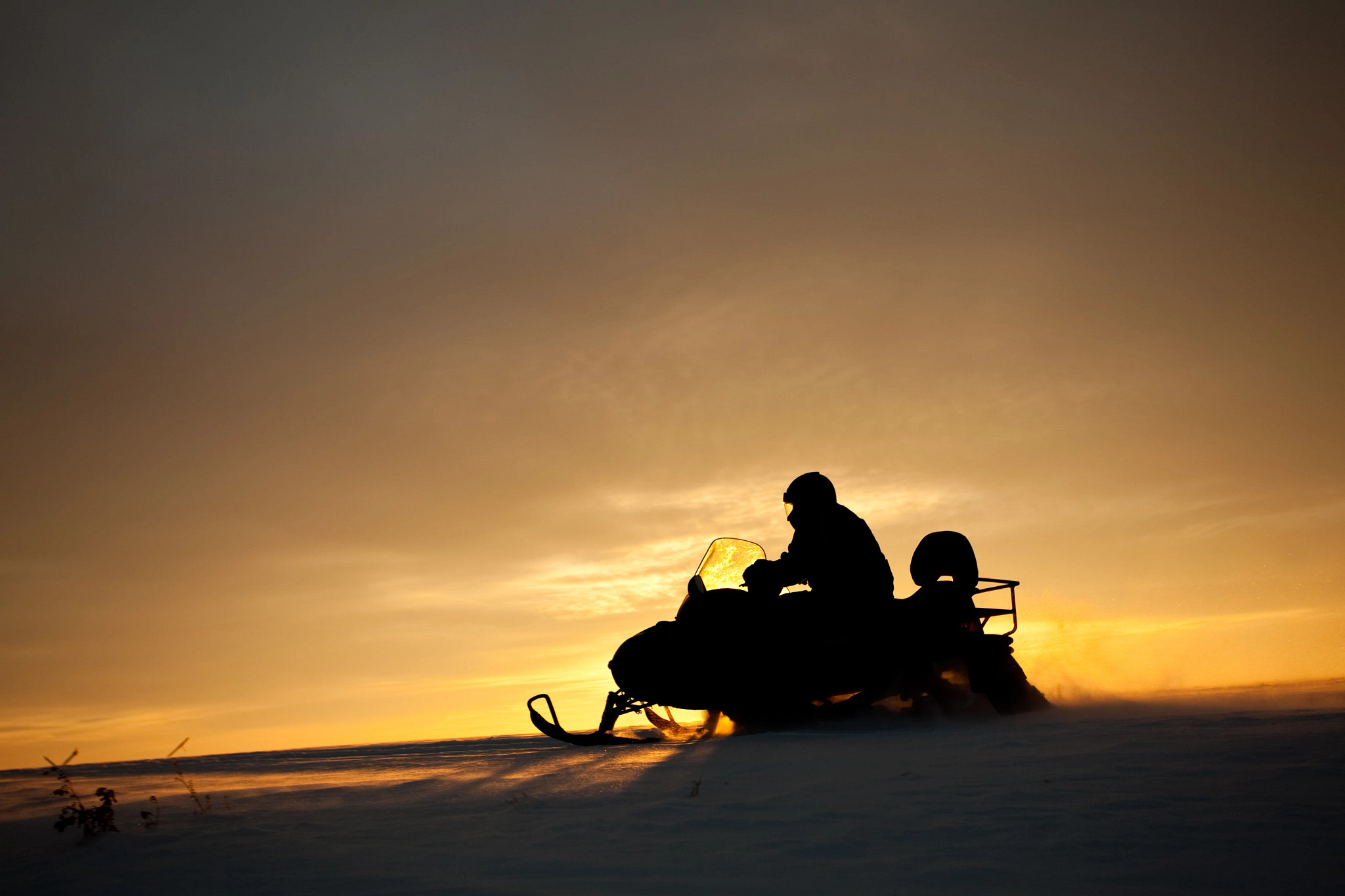Contact: Captain April Dombrowski, DNR Recreational Safety Section Chief
April.Dombrowski@wisconsin.gov or 608-852-9456
Snowmobilers: Think Smart Before You Start
Snowmobile And Ice Safety Tips From The Wisconsin DNR
 When traveling at night, operate at reasonable speeds as to not overdrive what headlights can illuminate, such as trail markers or hazards. Remember that there is a 55 mph speed limit at night.
Photo credit: iStock/ImagineGolf
When traveling at night, operate at reasonable speeds as to not overdrive what headlights can illuminate, such as trail markers or hazards. Remember that there is a 55 mph speed limit at night.
Photo credit: iStock/ImagineGolf
MADISON, Wis. – With winter officially in full swing in Wisconsin, the Wisconsin Department of Natural Resources (DNR) reminds snowmobilers that safety is key for the best ride.
Snowmobiling got off to a deadly start last year. There were 19 snowmobile fatalities between January and March 2020, three of those involving someone under the age of 18.
"Most snowmobile crashes are preventable. Alcohol, excess speed, driver inexperience and operator error are the leading causes of snowmobile fatalities," said DNR Conservation Warden Lt. Martin Stone. "Safety is an important part of the ride. Make sure to brush up on safety rules and regulations before you head out this winter."
There is no such thing as 100% safe ice. Snowmobilers cannot judge ice's strength by factors like appearance, age, thickness or temperature, especially when the ice is snow-covered. Before heading out, snowmobilers are encouraged to contact local fishing clubs, snowmobile clubs or outfitters to inquire about ice conditions, as the DNR does not monitor these conditions.
Any person who is at least 12 years old and born on or after Jan. 1, 1985 is required to have a valid Snowmobile Safety Certificate to operate a snowmobile in most areas. Operators must carry the certificate while riding and display it to a law enforcement officer when requested. More snowmobile regulations are available here.
Think smart before you start this season by following these tips:
ON THE TRAILS
- Don't drink and ride.
- Stay on marked trails and routes.
- Always stay to the right side of the trail, especially in corners. The trails are public; never ride like there is no one else coming.
- Always come to a complete stop at all stop signs and road crossings and yield to motor vehicle traffic. When stopped, look both ways and cross only when it’s safe.
- Always wear your helmet and safety gear.
- Use extra caution at night. When traveling at night, operate at reasonable speeds as to not overdrive what headlights can illuminate, such as trail markers or hazards. Remember that there is a 55 mph speed limit at night.
- Travel with a friend, carry a cell phone and let people know where you are going and when you'll return home.
- Dress appropriately and carry a first-aid kit and navigation tools.
- Take a snowmobile safety course. Visit the DNR Safety Education webpage for details and to locate a class or take an online course.
ICE SAFETY
The DNR does not monitor local ice conditions or the thickness of the ice. Local bait shops, fishing clubs and resorts serve winter anglers every day and often have the most up-to-date information about ice thickness on local lakes and rivers, as well as areas that are especially dangerous.
- Remember that ice is never completely safe under any conditions.
- Contact local sports shops to ask about ice conditions locally.
- Wear proper clothing and equipment, including a life jacket or a float coat to help stay afloat and slow body heat loss.
- Do not travel in unfamiliar areas.
- Slow down when traveling at night.
- Know if the lake has inlets, outlets or narrows with currents that can thin the ice.
- Watch out for pressure ridges or ice heaves. These can be dangerous due to thin ice and open water.
Additional information on snowmobile safety classes, regulations, safety tips and snowmobile registration is available here.

